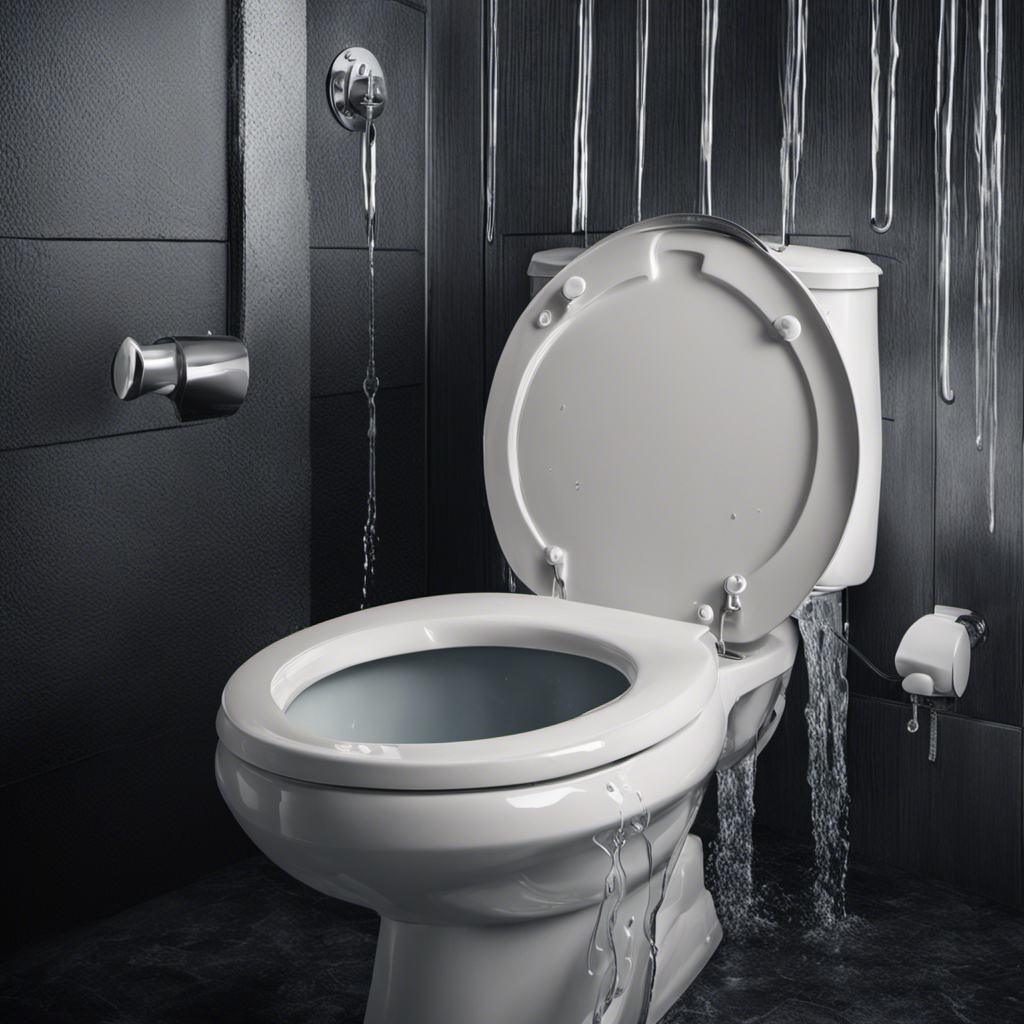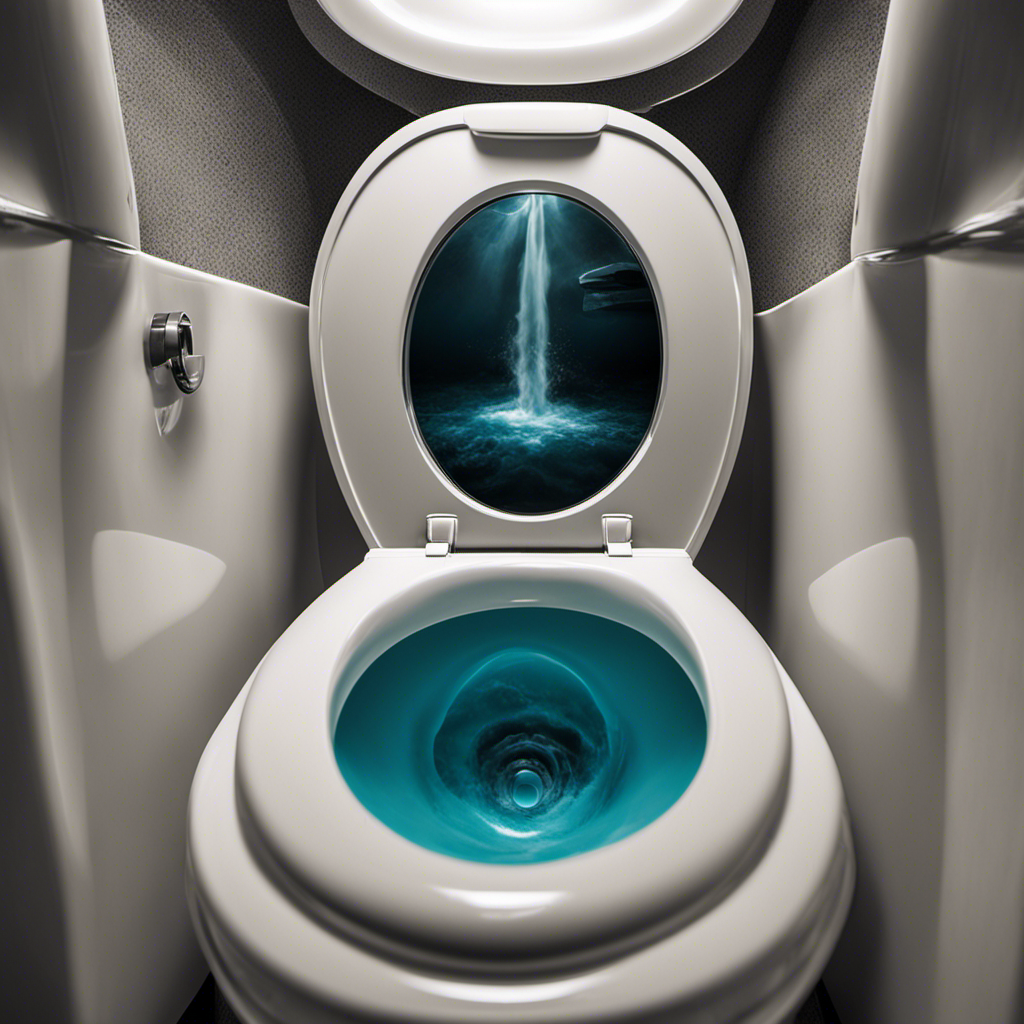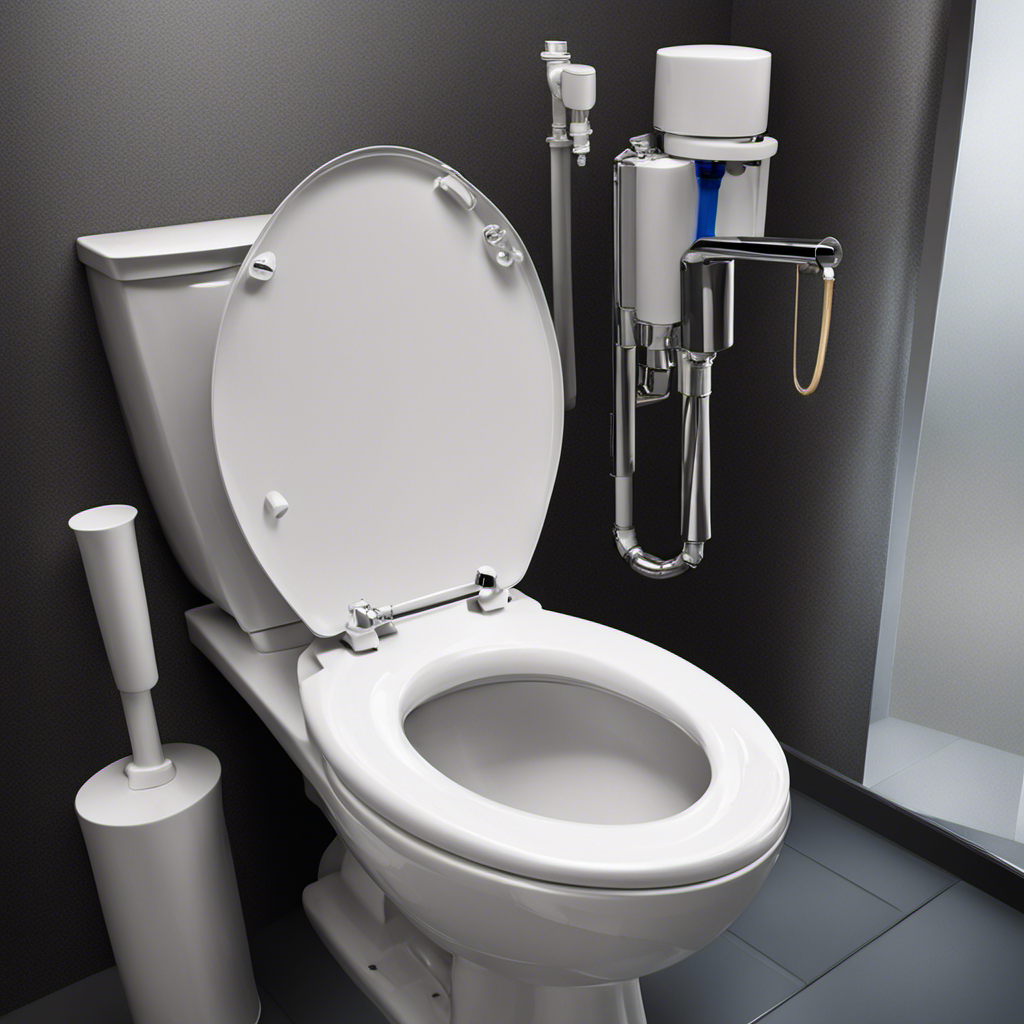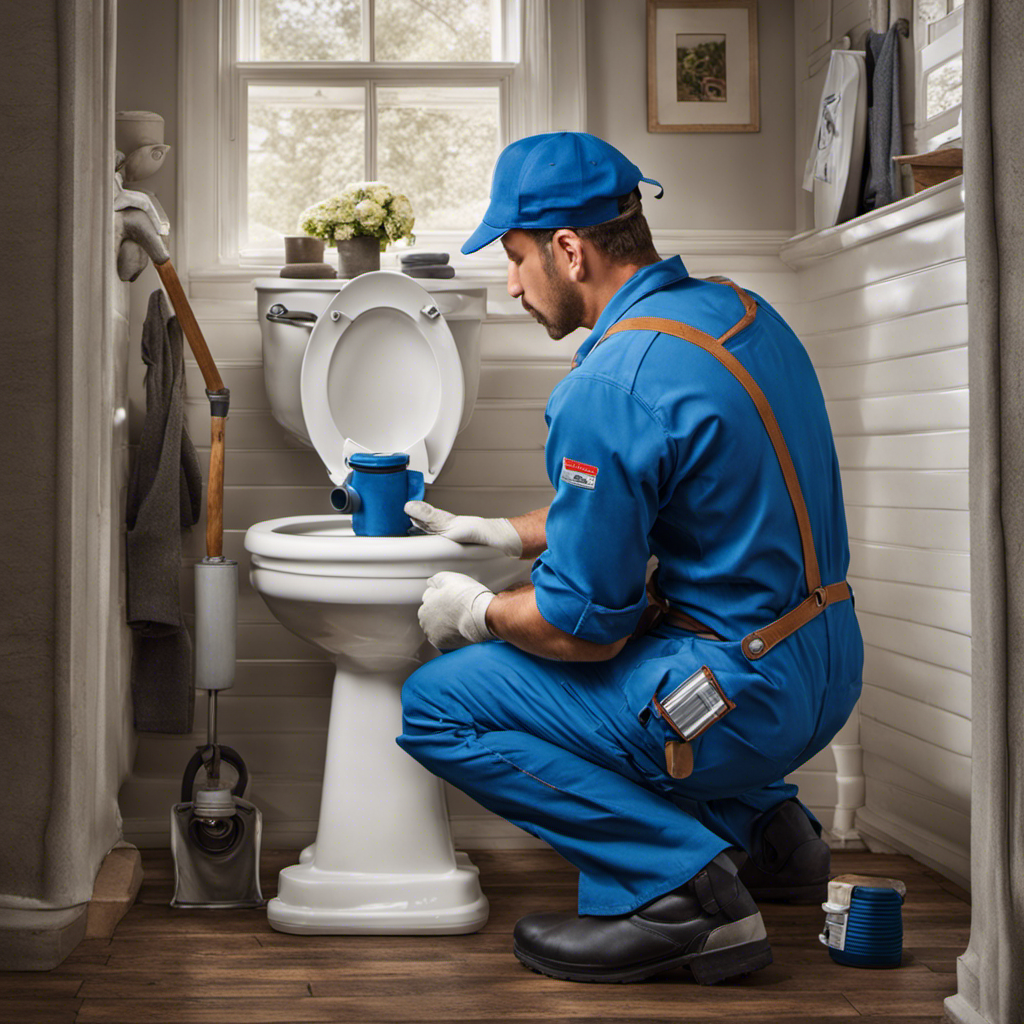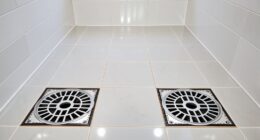I have had my fair share of frustrations with a toilet that just won’t stop running. It’s like a never-ending symphony of wasted water and annoyance.
But fear not, for in this article, I will guide you through the common causes, diagnosis, and steps to fix a running toilet.
We’ll also discuss tips to prevent this pesky problem from recurring.
So, let’s dive in and put an end to the relentless running toilet once and for all!
Key Takeaways
- A running toilet can be caused by a faulty flapper, loose fill valve, high water pressure, or a worn or damaged flapper valve.
- To diagnose a running toilet, you can remove the tank lid and inspect the flapper valve, flush the toilet and observe the flapper valve, check the water level in the tank, and listen for a constant hissing sound.
- Steps to fix a running toilet include turning off the water supply, inspecting and replacing the damaged flapper valve, adjusting the chain length connecting the flapper to the flush handle, and testing the toilet after turning on the water supply.
- To prevent a running toilet, regularly check the flapper valve for damage, inspect for wear or damage, test the flapper valve after flushing, replace the flapper valve if necessary, and follow proper toilet maintenance practices.
Common Causes of a Running Toilet
The most common causes of a running toilet are a faulty flapper or a loose fill valve.
The flapper is a rubber seal that controls the water flow from the tank to the bowl. If it becomes worn or damaged, it may not seal properly, causing water to continuously leak into the bowl.
The fill valve, on the other hand, is responsible for regulating the water level in the tank. If it becomes loose or worn out, it may not shut off completely, leading to a constant flow of water.
Another factor that can contribute to a running toilet is high water pressure. Excessive water pressure can put strain on the fill valve, causing it to malfunction.
It is important to address these issues promptly to prevent water waste and potential damage to the toilet.
How to Diagnose a Running Toilet
To diagnose a running toilet, you should first check the flapper valve. This is a common cause of a faulty toilet and can be easily fixed. Here are the steps to diagnose a running toilet:
-
Start by removing the tank lid and inspecting the flapper valve. Look for any signs of damage or wear.
-
Next, flush the toilet and observe the flapper valve. If it doesn’t close completely or if it’s not sealing properly, it may need to be replaced.
-
Check the water level in the tank. If it’s too high, it can cause the flapper valve to stay open and result in a running toilet.
-
Another sign of a faulty toilet is if you hear a constant hissing sound coming from the tank. This indicates that water is continuously flowing into the bowl.
If you’re unsure about diagnosing or fixing the problem, it’s best to call for professional toilet repair services. They have the expertise to identify and resolve any issues with your toilet.
Steps to Fix a Running Toilet
Start by turning off the water supply to the toilet before attempting to fix the issue. A running toilet can be a frustrating problem, not to mention the impact it can have on your water bill. To help you fix this issue, I’ve outlined the steps below:
| Step | Description |
|---|---|
| 1 | Remove the toilet tank lid and inspect the flapper valve. |
| 2 | Check if the flapper valve is damaged or not seating properly. |
| 3 | If the flapper valve is damaged, replace it with a new one. |
| 4 | Adjust the chain length connecting the flapper to the flush handle. |
| 5 | Finally, turn on the water supply and test if the toilet no longer runs. |
Tips for Preventing a Running Toilet
One way to prevent a toilet from running is by regularly checking the flapper valve for damage. The flapper valve is responsible for controlling the flow of water from the tank to the bowl. If it becomes worn or warped, it can cause a continuous leak, resulting in a running toilet.
To ensure the flapper valve is in good condition, you can follow these steps:
- Inspect the flapper valve for any signs of wear or damage, such as cracks or tears.
- Test the flapper valve by flushing the toilet and observing if it seals properly after the tank is refilled.
- If necessary, replace the flapper valve with a new one to prevent any leaks.
Professional Solutions for a Persistent Running Toilet
If you’re struggling with a persistent running toilet, it may be time to consider hiring a professional for a long-lasting solution.
While toilet maintenance tips can help prevent common toilet problems, sometimes the issue goes beyond what you can handle on your own.
A professional plumber has the expertise and tools to diagnose and fix the problem effectively. They can identify the root cause of the running toilet, whether it’s a faulty flapper valve, a damaged fill valve, or a leaky seal.
These professionals can also check for any underlying issues that may be contributing to the persistent running, such as water pressure problems or sewer line blockages.
Frequently Asked Questions
Can a Running Toilet Cause an Increase in Water Bills?
Yes, a running toilet can cause an increase in water bills. It continuously wastes water, leading to higher utility costs. Additionally, this wastage has a negative environmental impact as it puts a strain on our water resources.
Are There Any Health Risks Associated With a Running Toilet?
There can be health hazards and potential risks associated with a running toilet. It can lead to water contamination, mold growth, and increased humidity, which can contribute to respiratory issues and allergies.
Can a Running Toilet Damage the Plumbing System?
Yes, a running toilet can damage the plumbing system. Common causes include a faulty flapper or fill valve. To fix it, first, turn off the water supply, then replace the faulty part.
Can a Running Toilet Affect the Water Pressure in the House?
A running toilet can affect the water pressure in the house. It can lead to reduced flow in other fixtures, impacting water conservation. Troubleshooting common toilet issues, like a faulty flapper or fill valve, can help resolve this problem.
Are There Any DIY Methods to Temporarily Fix a Running Toilet?
Sure, there are DIY methods to temporarily fix a running toilet. Some common toilet problems that can cause this include a faulty flapper, fill valve, or float. These can be easily replaced or adjusted to stop the running.
Conclusion
Well, folks, I hope you’ve enjoyed this little journey into the world of running toilets. Who knew something as seemingly innocent as a toilet could cause such a commotion? But fear not, for armed with the knowledge of common causes, diagnostic techniques, and handy fixes, you can conquer any running toilet that dares to cross your path.
Remember, prevention is key, so don’t forget those handy tips to keep your toilet in tip-top shape. And if all else fails, don’t be afraid to call in the professionals.
Happy flushing, my friends!
